Urban and Smaller Gardens - Useful Plants and Tips
Urban and Smaller Gardens - Useful Plants and Tips

Whether your plot is a patch of front garden, a square of lawn, a balcony, a window box or simply a front doorstep, you can still capture the uplifting, enriching power of plants.
If your garden is currently just a place to keep the bins, now is the perfect opportunity to transform that space into your own miniature Eden. With our tips and a dash of your creativity, you will enjoy a spectacular display across the seasons, whatever space you have.
Flowers for months on end
A small, perfectly formed space often requires a unified look. The simplest way of doing this is to prioritise a colour-palette that most appeals to you and stick to it, avoiding too many competing elements.
Intersperse these garden favourites with a handful of shorter-seasoned varieties which you can anticipate the arrival of each year - dreamy peonies and stately irises put on a spectacular display and have real presence in a planting space. We are sure you will gleefully look forward to their arrival every year.
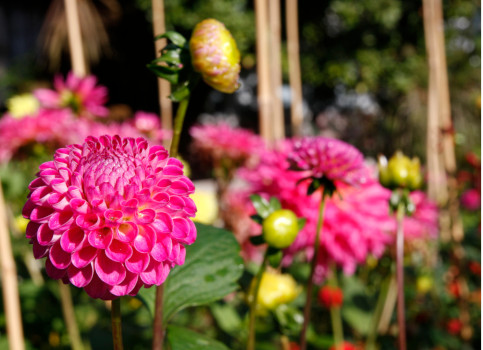
Here are some reliable perennials with blooms spanning several seasons:
- Hardy Geraniums – geraniums are extremely adaptable, they flower for months, offer handsome, weed-suppressing foliage, and come in an array of forms and colours. Geranium ‘Rozanne’ is a classic for good reason, Geranium phaeum is brilliant for shade, and our Geranium Collections provide an attractive variety of blooms.
Geum ‘Totally Tangerine’- a vigorous, pest-resistant perennial to provide a burst of colour almost all year round.
-
Erysimum ‘Bowles’s Mauve’- equally at home in a cottage-style garden or a modern design, with flowers from spring until autumn set against silvery, evergreen foliage.
For minimal fuss, hard-working, robust, long-flowering perennials with attractive foliage and multi-seasonal interest should form the backbone of your garden.
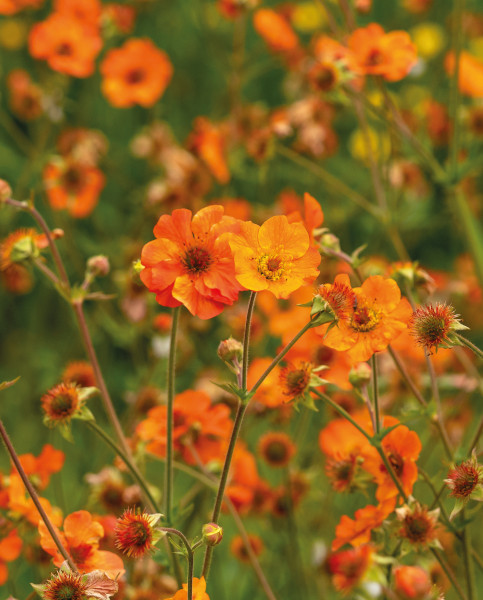
Engage all the Senses
Gardens that beckon you tend to appeal to all of the senses. Often referred to as sensory gardens these special havens will not only look amazing, they will also introduce perfume, movement, texture and culinary interest.
It can be easy to assume a small space must equal small plants – in fact, a combination of strong, architectural forms can make an area feel bigger. Mix up shapes to maintain visual interest: an assortment of airy plumes, blousy flower heads, tall spires, disks and lush greenery will provide a rich, varied tapestry that encourages the eye to dance around the space in delight.

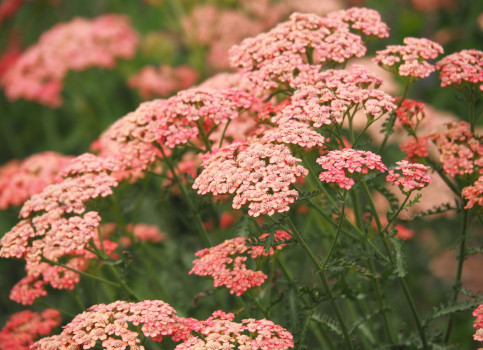
Favourites for creating height, texture and movement:
-
Ornamental grasses such as Cortaderia ‘Tiny Pampa’ and Panicum Virgatum ‘Prairie Sky’ will swish, sway and rustle in the breeze.
Verbena Bonariensis is tall and airy, adored by pollinators and highly structural.
Achillea ‘Apricot Delight’ with its colour-changing, domed flowerheads from May to October, has the added bonus of feathery, textural foliage.
A handy tip is to repeat these chosen elements throughout your garden for a sense of pattern and flow.
Savour the perfume of varieties:
-
Lavender ‘Hidcote’ which provides a haze of lilac, a magnet to bees, and silvery domes of foliage in the winter.
Dianthus ‘Sweet Pleasure’ has a heady spiced fragrance, and gorgeous ruffled blooms.
-
Phlox is commonly referred to as the ‘Chanel of the plant world’ and will provide clouds of exquisite perfume.
Grow scented varieties near to seating areas, doors, and pathways to fully appreciate the aroma. An enclosed space can also be the ultimate opportunity to capture fragrance – the scent of blooms is intensified and will radiate from sun-warmed walls to fill the entire garden.
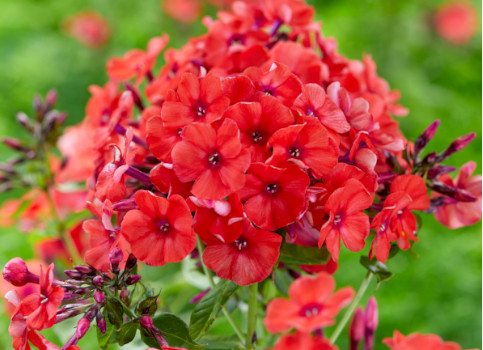

As well as fragrance, your garden can offer something tantalising for the tastebuds:
-
Blackberry ‘Darts Back Cascade’offers juicy berries and has a weeping habit – ideal for growing in hanging baskets.
-
Blueberry ‘Dwarf Blue Sapphire’ is terrific for growing in a pot, with dainty white blossom, super-sweet fruits and fiery autumnal foliage.
-
Herbs such as rosemary and mint are undemanding and can be plucked to add to all sorts of dishes.
Many of these fruit and vegetable varieties are decorative as well as delicious so can be interspersed with more traditional border plants and bedding – for example, rhubarb will offer giant leaves and red stems as a point of interest as well as an ingredient for a delicious crumble.
For soothing sound and sparkling reflections, consider adding a miniature water feature. Even a small bowl with a trickle fountain can create the feeling of an oasis. Water is also vital for attracting wildlife: birds will frolic, bathe and drink from it, and you may be lucky enough to attract a few frogs. Wildlife is the beating heart of a garden, and this is just as true of a smaller space. Make your garden a sanctuary for living creatures and it will be brought to life with the fluttering of butterflies, the buzzing of bees, and the sweet sound of birdsong.

Embrace every space
Examine your garden to see if there are any bare, unloved areas – plants are remarkably adaptable, and there is a variety for almost every situation. If there is an area in shade for most of the day, you still have plenty of options to create a haven in an otherwise dingy corner.
Plants that flourish in lower light levels include:
-
Hostas: for lush, vibrant greenery in damp shade. For a slug resistant, compact variety, chooseHosta ‘Mouse Ears’.
Foxgloves: spires of beautiful blooms adored by bees, ideal for dappled shade. Try the hardy perennial, long-flowering variety, Digitalis 'Goldcrest'.
-
Liriope ‘Lilac Wonder’: copes with dark and dry conditions, offering blades of evergreen foliage and purple blooms in autumn.
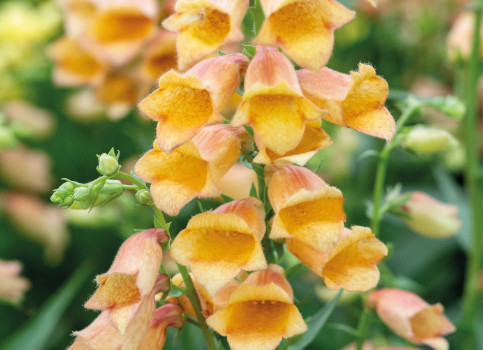
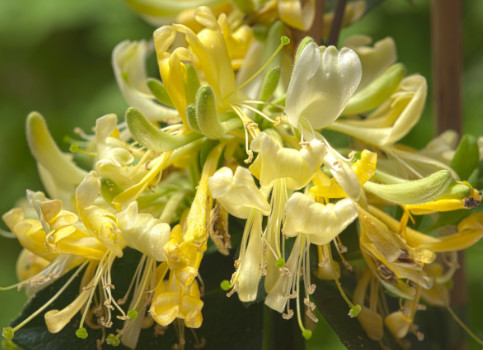
Walls, sheds, and fences can be adorned with wall planters and hanging baskets, and structures such as obelisks can be covered with climbers such as:
-
Trachelospermum Jasminoides: glossy, evergreen leaves and divinely scented blooms. For extra ornamental appeal, try Trachelospermum Tricolourwhich has variegated foliage, splashed with pink.
-
Honeysuckle: Lonicera ‘Scentsation’provides some of the best scent, is suitable for shaded areas, and is useful for scrambling up a trellis or over a shed.
Opt for a tree which earns its place and extends interest across the seasons:
- Amelanchier Lamarckii: delicate blossom in spring, purple berries in summer and spectacular autumnal foliage.
- Cercis Siliquastrum: vibrant blossom exhibited on bare branches in spring, followed by blue -green, heart-shaped foliage which changes to gold in autumn.
- Acer Palmatum ‘Emerald Lace’: filigree foliage which emerges lime green, transforms to lush verdant green and offers a blaze of autumnal reds. Will grow happily in a large container.
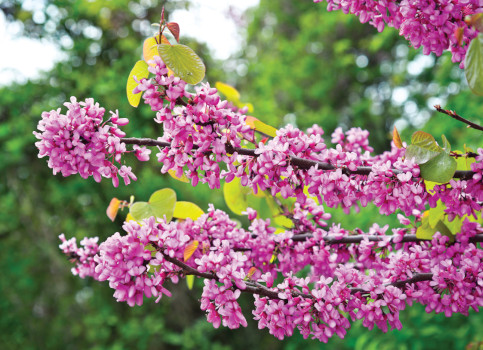
Tall trees or shrubs will further draw the eye upwards, expanding the confines of the enclosure. Trees offer structure, shade, habitat for wildlife, and screening from potentially nosy neighbours. There are slender, upright and pleached varieties which have a small footprint, diminutive dwarf cultivars, and even varieties to grow in pots.
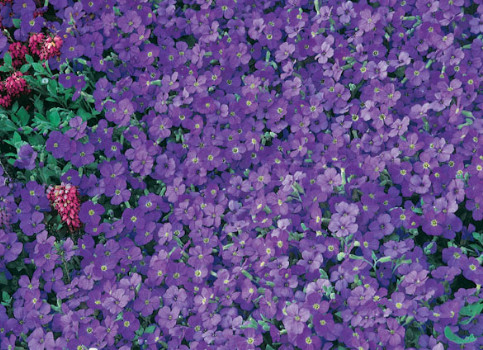
Tuck the varieties below into nooks and crannies to soften edges and add greenery to unexpected places:
- Thyme ‘Fredo’ will help you create a scented pathway by nestling in between paving slabs.
- Sedum ‘Angelina’s Teacup’ is a drought-resistant, lime green, succulent foliage which will grow in gravel.
- Aubrieta ‘Royal Blue’ adds a flush of violet blooms to tumble over walls.
Crevices between paving and bricks are another often overlooked planting opportunity.
Perfect Pots - stars of the stage
Perhaps you only have the space for a few pots – even this is an opportunity to create a flamboyant floral extravaganza, crammed with colour. Treat the space like a stage where your pots can be the stars of the show. You can be the stage director (or choreographer) and containers can be played with, moved around, and changed to suit the seasons. Versatile enough to be seasonally adjusted to reflect your mood and available in all manner of styles and sizes.
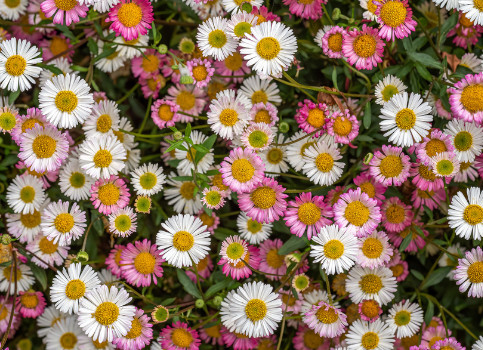
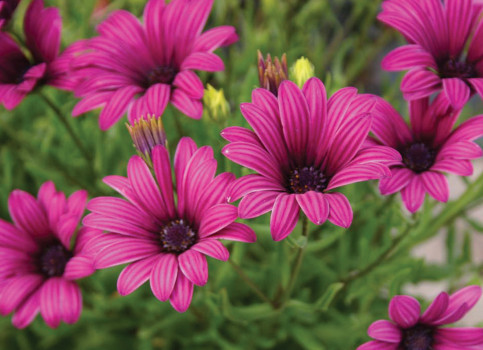
Try some of the following for pots, window boxes and hanging baskets:
-
Erigeron Karvinskianus– drought-resistant, daisy-like flowers to tumble over the edges of containers from May to October.
Osteospermum offer a non-stop explosion of flowers. Try the hardy varietyOsteospermum Tresco Purple for a long-lasting display.
To get you started you can even choose a specially Curated Collectionfor the perfect combination of bedding plants.
Select the biggest pots you can find – larger containers securely anchor plant roots and require less watering. Also remember, nearly anything can be used as a container – metal bins, coal buckets, colanders, and old watering cans – so long as there are a few drainage holes in the bottom.
Top bulbs for a procession of blooms:
-
Daffodil ‘Erlicheer’ – elegant, cream, double flowers in early spring.
Tulip ‘Florosa’, with stylish, slender-petalled blooms in mid-spring.
Allium ‘Lavender Bubbles’ for deep purple globes in summer.
-
Crocosmia ‘Emily Mackenzie’ for arching stems of amber blooms, followed by attractive seed-heads in autumn.
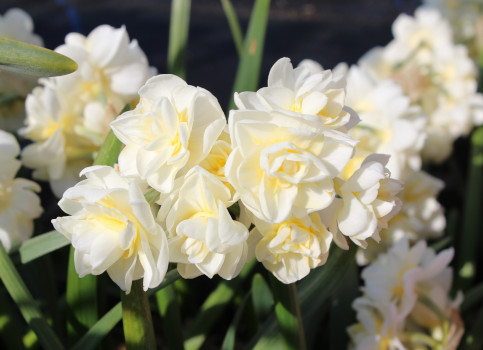
Bulbs and corms are also outstanding candidates for filling pots. Most bulbs can be packed together for an exuberant display that lasts and lasts. One extremely effective way of planting bulbs is as a ‘lasagne’; layering bulbs and compost alternately for a staggered display.
Bulbs can also be dotted through borders to peep between other plants. If you want your bulbs to return each year, leave the foliage to turn yellow before chopping back.
Savour the small things
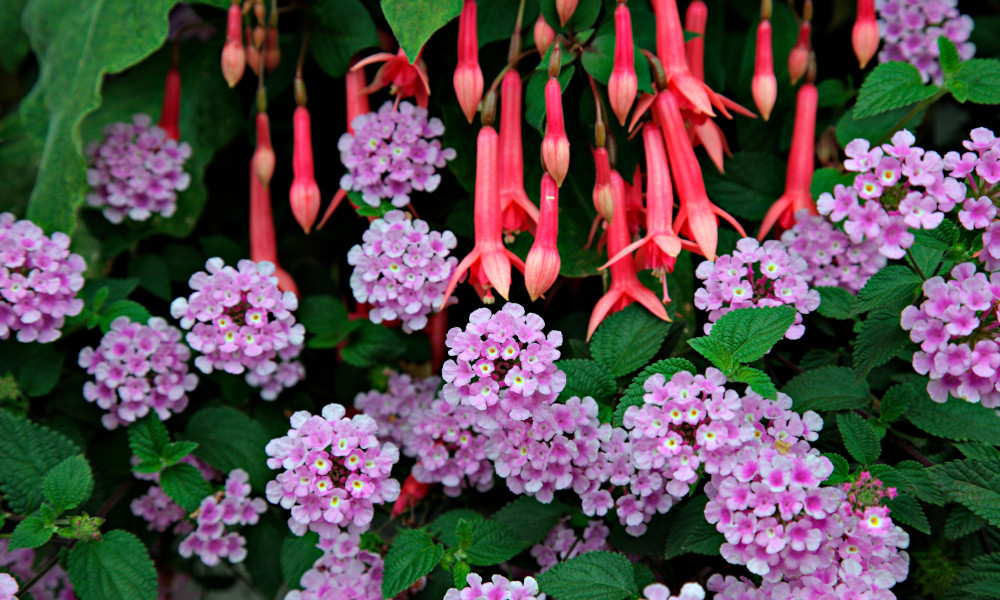
Most importantly, remember to give yourself time to enjoy the little haven you have created. Ensure you have somewhere to sit and relish your surroundings – a bistro set which can easily be folded out the way is ideal for smaller spaces (and the table can be used as a further space to display pots).
If you embrace and adapt to the challenges of a limited space, you will soon find it brings its own benefits. Instead of having to laboriously maintain a great expanse of earth, you can focus your efforts for maximum reward. In a small garden, every single plant can be appreciated for all its finer details – nothing is lost or overlooked.
As the author Victor Hugo wrote: ‘Nothing is really small; whoever is open to the deep influence of nature knows this.’ Beauty can be created and admired in even the smallest spaces, so happy planting Haylofters…





